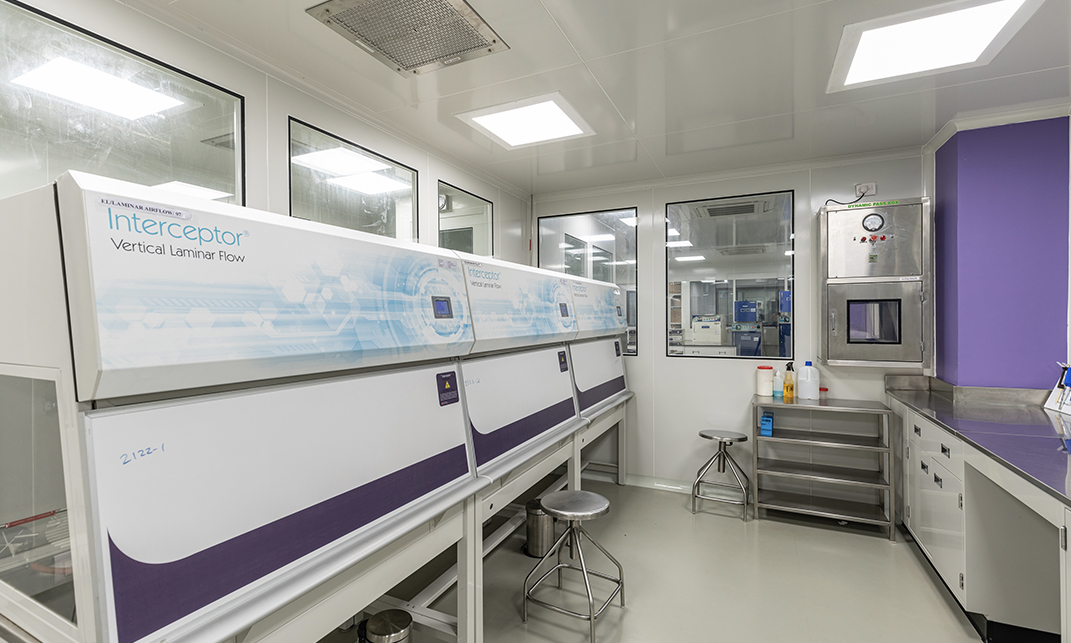Cleanroom Classification Requirements
A cleanroom is an environment typically used in different laboratories, where low level of environmental pollutants and a high level of sterility is required. It is a ‘contained space’ where arrangements are made to reduce the introduction, production, and storage of particles inside the room and to control other environmental factors such as temperature, humidity, and pressure.
Depending on specific needs, cleanrooms have various levels of contaminants, such as airborne particles, dust particles, and chemical vapors, to be measured in the number of particles per meter. Cleanrooms are widely utilized in the following areas because they are sensitive to environmental contamination:
- Biotechnology labs
- Electronic assembly
- Semiconductor manufacturing
- Pharmaceutical labs
- Medical labs
OBJECTIVE OF A CLEANROOM
The main objective of a cleanroom is “to maintain a constant environment with controlled levels of airborne particles.”
This can be achieved by taking preventive measures so that contaminated particles and pollutants will not enter the contained spaces. External air entering the environment should be filtered and often kept at a positive pressure so that the unfiltered air will not be entered into the filtered environment.
CLEANROOM CLASSIFICATIONS
Cleaning chambers are classified according to the air quality based on the value of 0.5 mm or larger particles per cubic feet or meters consistent with US Federal Standard 209 (A through D). They are classified consistent with the amount and size of particles that are permitted per volume of air. The following is a table shows the various cleanroom classifications based on US Federal Standards:
| Class | Maximum particles/ft3 | ISO equivalent | ||||
| ≥0.1 µm | ≥0.2 µm | ≥0.3 µm | ≥0.5 µm | ≥5 µm | ||
| 1 | 35 | 7.5 | 3 | 1 | 0.007 | ISO 3 |
| 10 | 350 | 75 | 30 | 10 | 0.07 | ISO 4 |
| 100 | 3,500 | 750 | 300 | 100 | 0.7 | ISO 5 |
| 1,000 | 35,000 | 7,500 | 3,000 | 1,000 | 7 | ISO 6 |
| 10,000 | 350,000 | 75,000 | 30,000 | 10,000 | 70 | ISO 7 |
| 100,000 | 3.5×106 | 750,000 | 300,000 | 100,000 | 830 | ISO 8 |
The US federal standards were officially canceled in November 2001, with most switching to ISO-14644-1 and ISO 14698 standards that measure the number and size of particles that are permitted per cubic meter of air. The following is the table:
| Class | Maximum particles/m3 a | FED STD 209E equivalent | |||||
| ≥0.1 µm | ≥0.2 µm | ≥0.3 µm | ≥0.5 µm | ≥1 µm | ≥5 µm | ||
| ISO 1 | 10b | d | d | d | d | d | |
| ISO 2 | 100 | 24b | 10b | d | d | e | |
| ISO 3 | 1,000 | 237 | 102 | 35b | d | e | Class 1 |
| ISO 4 | 10,000 | 2,370 | 1,020 | 352 | 83b | e | Class 10 |
| ISO 5 | 100,000 | 23,700 | 10,200 | 3,520 | 832 | d,e,f | Class 100 |
| ISO 6 | 1,000,000 | 2,3700 | 1,02000 | 35200 | 8320 | 293 | Class 1000 |
| ISO 7 | 3,52000 | 83200 | 2930 | Class 10000 | |||
| ISO 8 | 3520000 | 832000 | 29300 | Class 100000 | |||
| ISO 9 | 35200000 | 8320000 | 293000 | Class 1000000 | |||
AIR HANDLING AND VENTILATION
For contamination control, both Air Handling and Ventilation are important.
- The size of the particle-like 0.3 microns and larger (ISO Class 2-9) are controlled by High Efficiency Particulate Air (HEPA) filter.
- For smaller particles (ISO Class 1) Ultra Low Particulate Air (ULPA) filters are used.
Depending upon the ISO class desired, airflow type, airflow velocity, and air changes are determined by always keeping positive pressure in the cleanroom.
CLEANROOM REQUIREMENTS
Following is some of the Cleanroom requirements related to ISO Standards.
- ISO 5- A Cleanroom must have less than 3520 particles>0.5 micron per cubic meter and 250-300 HEPA filtered air changes per hour.
- ISO 6- A Cleanroom must have less than 35200 particles>0.5 micron per cubic meter and 180 HEPA filtered air changes per hour.
- ISO 7- A Cleanroom must have less than 352000 particles>0.5 micron per cubic meter and 60 HEPA filtered air changes per hour.
- ISO 8- A Cleanroom must have less than 35200000 particles>0.5 micron per cubic meter and 20 HEPA filtered air changes per hour.
Various laboratories require cleanrooms and sterile environments to perform their experiments and to produce their products. Following are the three important requirements defined in the Good Manufacturing Practices (GMP) of a cleanroom:
- The internal surfaces of the cleanroom and the equipment should be smooth and impervious.
- The control and quality of air through the cleanroom; controlled temperature and humidity.
- The way the cleanroom is operated and maintained.
Comments are closed.











